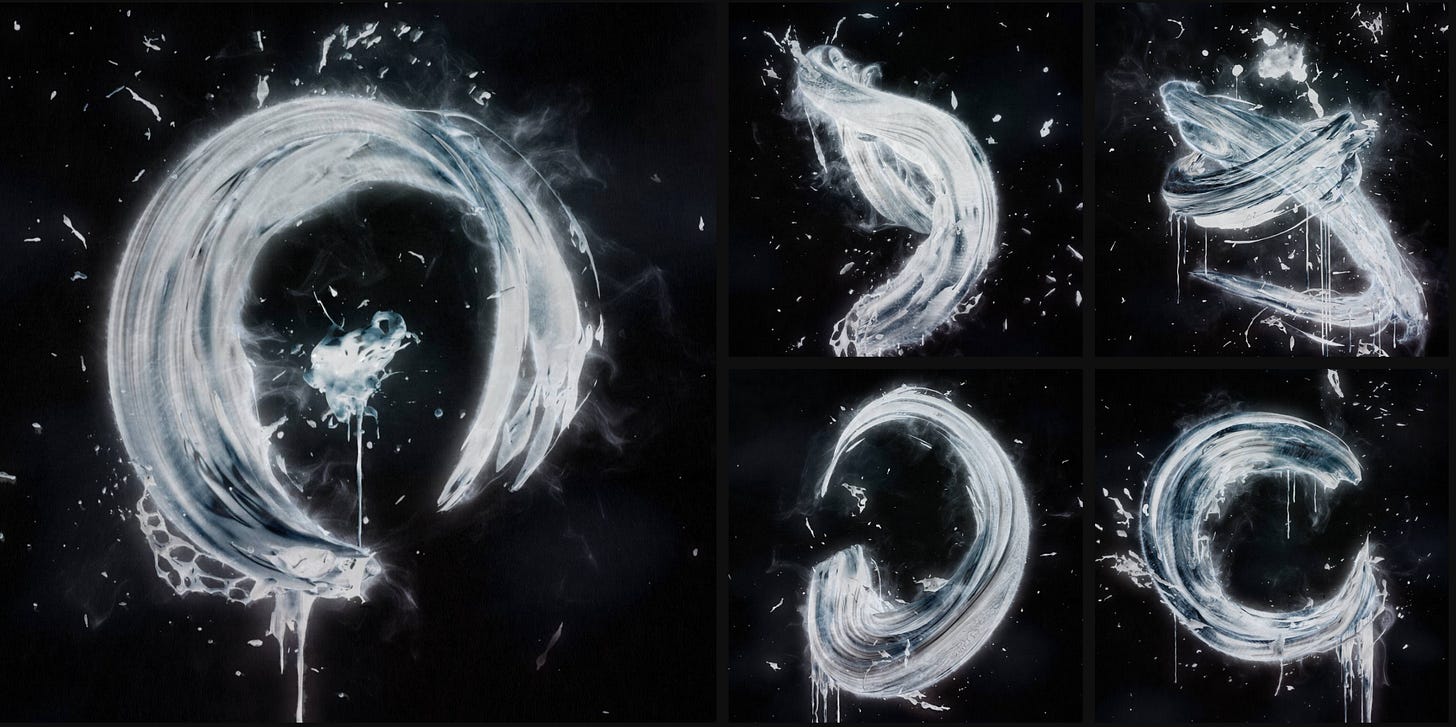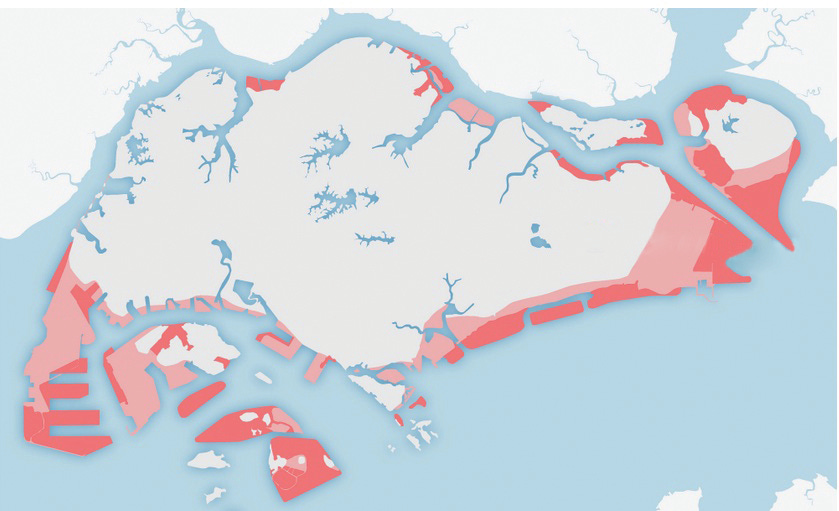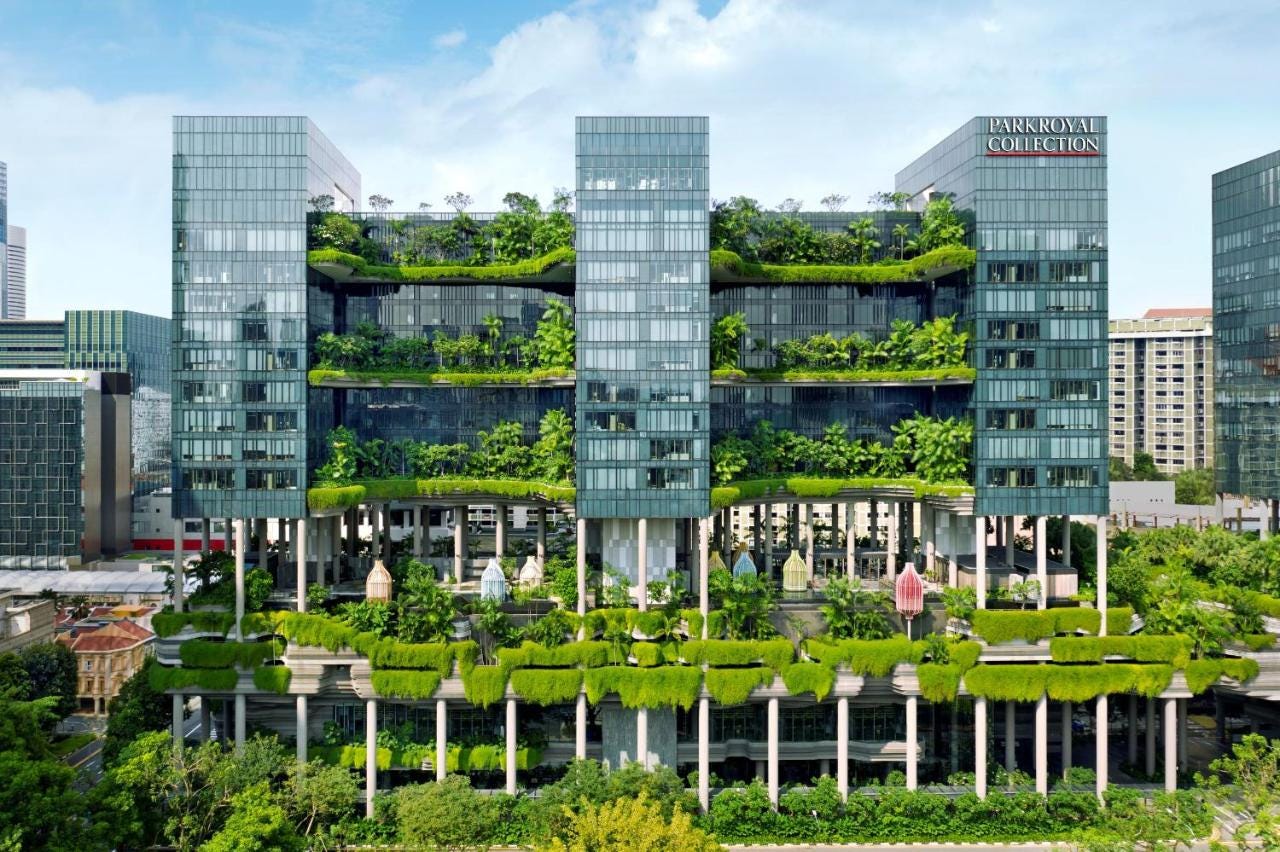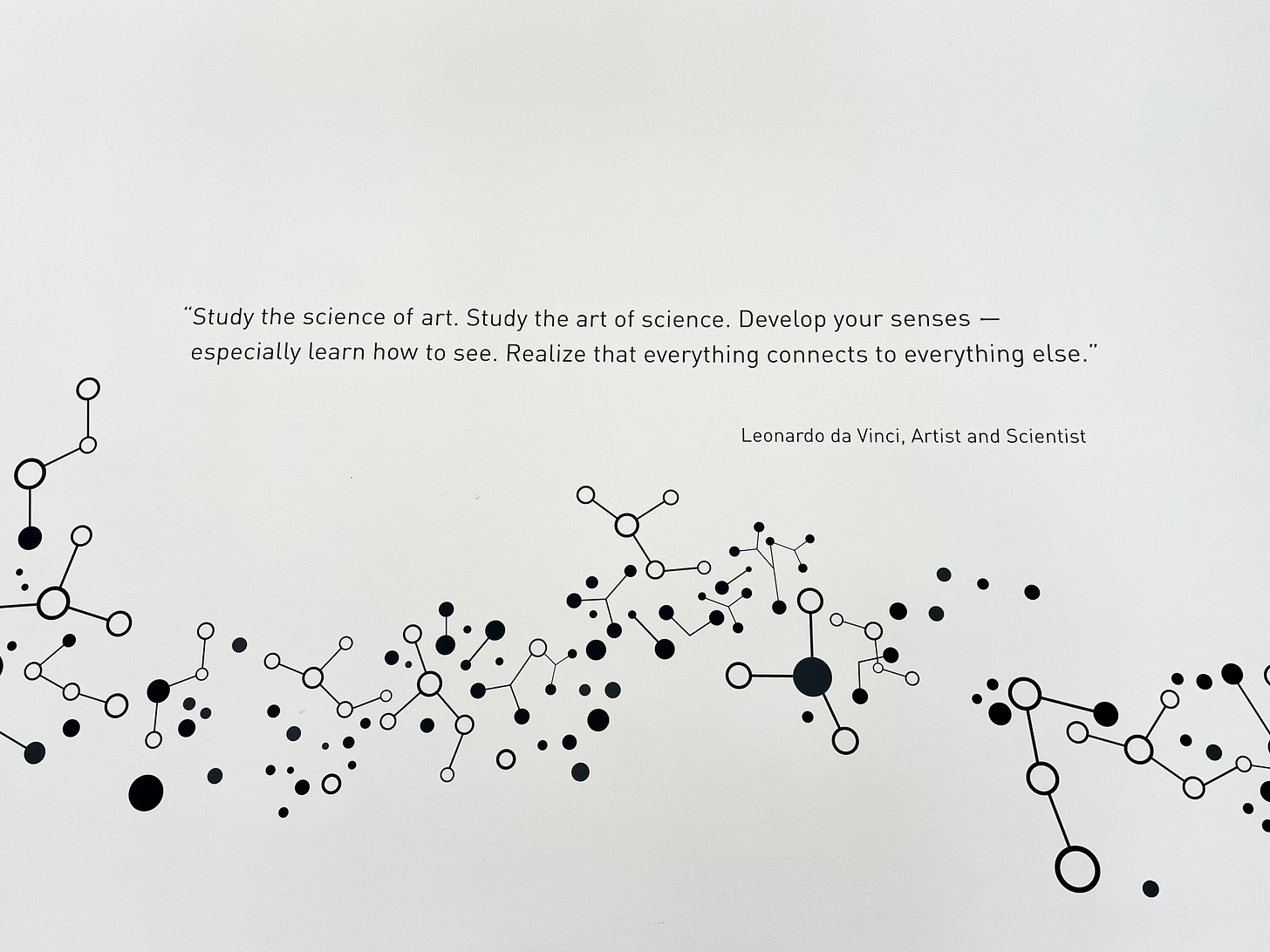The Intersection of Art and Science
The Singaporean fusion of science, technology, and nature
This week finds me in Singapore, a land of contrasts: lush jungle greenery and high-technology intertwined, a city simultaneously threatened by climate change and also leading the way to adapt to it. For hundreds of years, Singapore was a tranquil fishing village that grew into an influential maritime trading hub, which led to an influx of people from China, Malaysia, India, England, and beyond. After a period of rapid business expansion and industrialization in the 1980s, the city stands as a vivid testament to modernity—a peaceful multiethnic and multi-religious nation, a capitalist success story that is also highly egalitarian, a symbiosis of towering glass skyscrapers cohabiting with local trees and wildlife. In many ways, Singapore embodies how culture, environmental design, and technology can work hand-in-hand, rather than at cross-purposes, to build a highly livable and sustainable society.
Art or Science?
This actually marks my second visit to this tiny but amazing island-city-state. During our previous trip, we saw numerous iconic destinations and exhibitions, marking them off our travel bucket list one by one. Yet, there was a glaring omission—the ArtScience Museum at Marina Bay Sands. As a highly recommended attraction in my wheelhouse of blending art and science, I wasn’t going to miss it again and we visited it over the weekend.
The ArtScience Museum building itself is a remarkable architectural marvel shaped like an open lotus flower. With its stunning design and cutting-edge exhibitions, the ArtScience Museum showcases the interplay between creativity and scientific exploration through a diverse range of exhibits and interactive installations. The two permanent exhibits in the basement are Futureworld: Where Art Meets Science and The Sensory Odyssey: Into the Heart of Our Living World. There are also a series of different rotating pieces on display.
FutureWorld
The exhibits in Futureworld use light and sound to illustrate nature motifs inspired by Japanese and Chinese art. Many of these are randomized and driven by algorithms in real time that change based on the number of people in the room, the proximity to the displays, and gestures and motion. In the “Universe of Water Particles, Transcending Boundaries,” a digital waterfall washes over visitors and induces a sense of serene calm:
“Enso - Cold Light” shows an ever-changing, rotating, three-dimensional projection of a Zen calligraphy brushstroke forming a circle to serve as a meditation on both the Buddhist concepts of emptiness and impermanence as well as the mathematical concept of zero:
One of the most moving pieces is called “100 Years Sea [running time: 100 years].” It is a computer program that illustrates real time sea level rise due to climate change in the style of southeast asian paintings. The water has been insidiously creeping up the shoreline of the imaginary islands for the past 13 years and will continuously run for a century:
In the “Crystal Universe,” thousands of LED lights are suspended from the ceiling, creating a three-dimensional, interactive computer matrix of pointillism. These lights continuously change colors and patterns, synchronized with soothing, ambient music. Visitors can walk through the exhibit, feeling as though they are moving through a galaxy of stars or floating in a cosmic sea of light. The glowing matrix responds to visitors through their smartphone, creating a dynamic and immersive experience:
The Sensory Odyssey
This exhibit is a truly multi-sensory journey that allows visitors to experience the natural world like never before. You are lead through rooms filled with the ambient noises of plants and animals from various ecosystems and smells ranging from earth to jasmine, mushrooms, and savannah grass. In one area, there is a blackened room that simulates bat echolocation with an audiovisual display of the sound waves washing over the environment; it’s honestly pretty trippy. Other displays contain 8K video closeups of insects and microscopic flora and fauna. In a final section, you watch families of whales socializing and communicating through high-resolution underwater cameras, and then the scene shifts to videos of glaciers in Greenland creaking and vibrating before they shed huge fragments of their ice shelf into the ocean as the planet warms.



Notes from the Ether: From NFTs to AI
One of temporary, rotating exhibits is a gallery on digital art that uses blockchain, AI, and other computer technologies. There are banks of computers with software that visitors can adjust to create unique, randomized digital art on the fly based on adjusting dozens of parameters, which then project onto the wall. It brings a new dimension to the (now) old genre of abstract expressionism. There are meta pieces where the artist uses blockchain technology to track and document how their programs are being downloaded, used, and traded. There is a room full of VR headsets which people can use to try even more immersive experiences (I opted out as 3D movies and VR give me wicked motion sickness). Not everything in here was my cup of tea, but it was very cool to see an entire gallery dedicated to the bleeding edge of modern art.
After leaving the ArtScience Museum, I was left with an afterglow of wonder and mystery. The exhibits there offered unique sensory experiences unlike anything I've encountered in other museums or galleries. They reinforced the connection between art and science, showing different ways of representing the natural world, with a strong focus on climate change and sustainability, which was both eye-opening and inspiring.
Nature or Technology?
This fascination with the interplay between design and technology is not limited to one single museum; indeed the whole island of Singapore is quite literally built on clever solutions to a challenging environment: over 25% of the area of the island is based on “reclaimed land,” or using geoengineering to create new land from ocean marsh:
Another area where Singapore uses nature and technology to adapt to is curbing the dramatic heat and humidity of this equatorial nation. While Singapore produces a minuscule fraction of carbon emissions, it suffers from increasing global air and water temperatures all the same. Coincidentally, this week the New York Times featured a story on how Singapore is using smart city planning and green engineering to cool down the city. Some of this can be seen with the abundance of foliage integrated into techno-futuristic buildings, like the Park Royal Hotel below. Adding trees reduces temperatures in several ways, from providing shade to blocking moisture, and of course, absorbing local CO2. Another trick is using reflective paint on buildings and structures to deflect some of the light and heat away from the city.
City planners position buildings to face away from the sun and strategically stagger buildings of varying size near parks to capture cool breeze and promote airflow. Networks of pipes filled with chilled water are able to cool multiple buildings far more efficiently than traditional air conditioning.
And besides all of the ways this can mitigate a warming city, it has other benefits too (from the NYT article):
Can Singapore’s efforts to reduce urban heat islands actually outpace rising global temperatures? Probably not, local officials acknowledge. But holding temperatures steady would be a huge victory…
Urban planners and policymakers are recognizing that inventions to cool down cities also help in other ways. Green corridors and large green spaces support biodiversity, provide recreational spaces for residents and aid flood prevention.
“It’s a pleasant surprise to be here at this moment in climate change, realizing that our number one intervention has all these other benefits,” Dr. Stone said.
The Genius of the AND
In the classic business book “Built to Last,” Jim Collins discusses what he calls the “Tyranny of the OR”: the idea of a strict dichotomy between two different concepts or plans. Rigid, black-and-white thinking often ties our hands and limits innovation. Instead, he advocates for “The Genius of the AND” based on the dualism of the Taoist yin and yang—the idea that we can go farther by embracing the paradox of ideas that seem superficially opposed.
Singapore is a great illustration of the genius of unifying art AND science, nature AND technology, economic growth AND equality. For humanity to adapt to climate change, reduce poverty, and continue thriving, we can’t rely on STEM education alone; the humanities are essential to provide creative design and and ethical compass for technology. We don’t have to choose between decarbonizing and economic development, plummeting costs of renewable energy mean we can have both. A narrow focus on hyperspecialized niches can miss the big picture of thorny problems.
Adorning the stark white halls of the ArtScience galleries are abstract representations of chemical molecules and quotes by famous artists and scientists. The words of Leonardo da Vinci below could serve as a mission statement for that museum, Singapore itself, and how we need to change our thinking for the future. My trip this week makes me optimistic that solutions are out there if we’re willing to see and support the connections that are everywhere.











